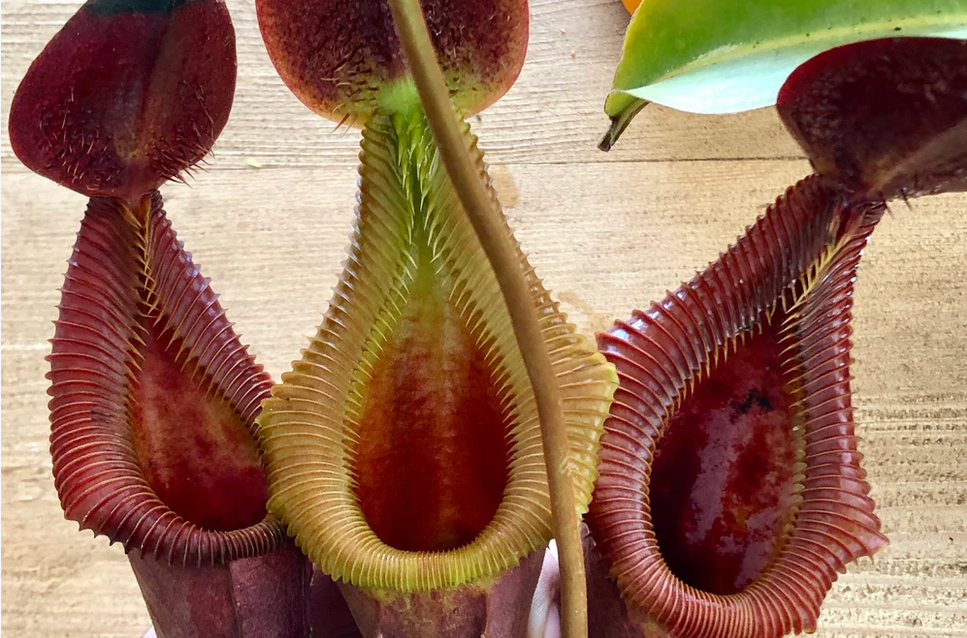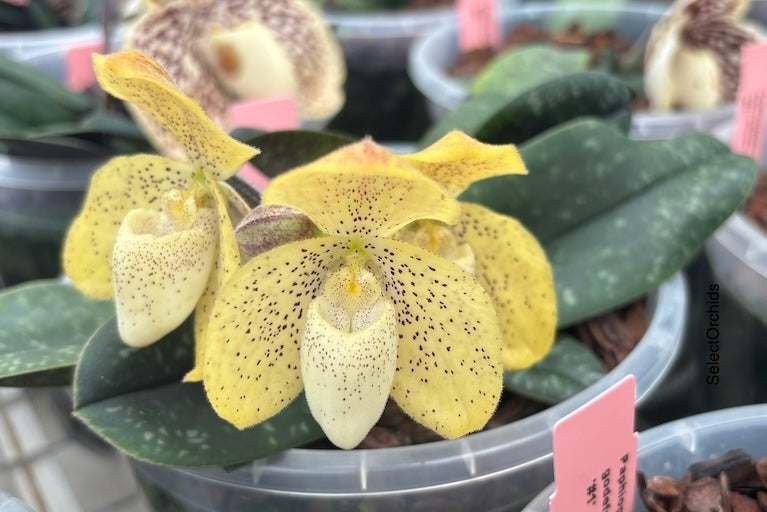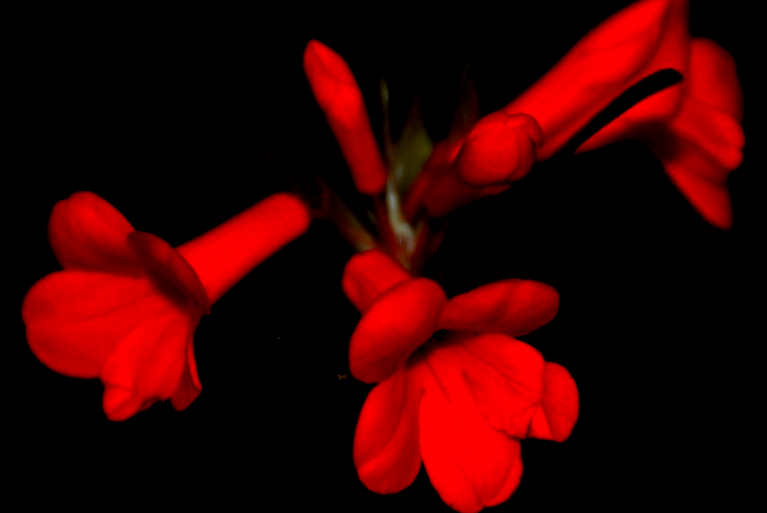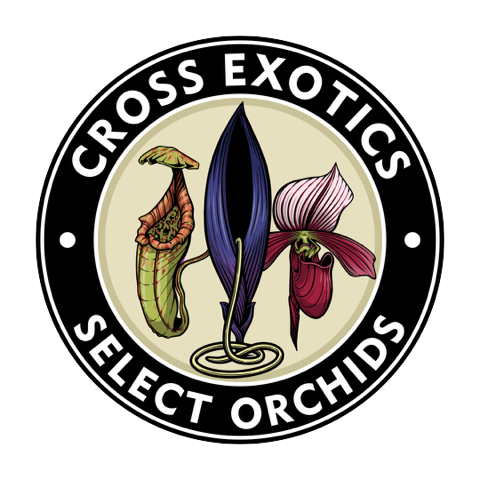Nepenthes x trusmadiensis

Nepenthes x trusmadiensis is a natural hybrid between N. lowii and N. macrophylla that was originally found on Gunung Trus Madi back in 1983. The hybrid, discovered on that expedition by German grower Johannes Marabini, was then named by him after the mountain it was found on, which is the largest mountain in Borneo’s Crocker Range and the second largest mountain in Borneo after Kinabalu. Since then, it has also been found on a couple other mountains along with its parent species, Mount Sinsing and Kaingaran. On one of these peaks, N. edwardsiana grows as well and another natural hybrid exists there between macrophylla and edwardsiana.
When Johannes Marabini climbed Trus Madi on John Brigg’s expedition, the large dentate Nepenthes they found growing along with N. lowii, and the ever so numerous N. tentaculata, was not the N. villosa they expected to find. Instead, they thought it was a different form of N. edwardsiana. However, the leaves on many plants were huge at 2 feet long each, dwarfing the already well-known form of N. edwardsiana found on Kinabalu and the nearby Tambuyukon that had been found by Sir Hugh Low back in 1858. This new edwardsiana consequently was named after its big leaves, Nepenthes edwardsiana ssp. macrophylla and then later was elevated to its own species by Jebb and Cheek.
At the time though, this realization that N. macrophylla was its own species was not apparent. Kinabalu made for a breathtaking view on top of the peak of Trus Madi, and any thought that these two mountains might not have identical flora when seemingly close by was quickly dismissed. However, unlike Kinabalu where N. edwardsiana and N. lowii grew at separate and distinct altitudes, on Trus Madi the species grew intermingled allowing the chance to find hybrids between them. Then the hybrid was located, an impressive toothy plant that was intermediate between the parents. Herbarium samples were taken for the University Erlangen including adequate samples of two of these hybrid plants which would become known as N. x trusmadiensis.
Back in Germany, the new hybrid species was described by Johannes based on a holotype, the definition sample of the species, that he pieced together from both of the plants he collected from, but primarily from the more impressive striped specimen. However, the herbarium samples had survived the transport back very well and as there was plenty for the herbarium, he went about growing cuttings of both plants from the remaining material. Both plants which were male, proved vigorous in cultivation, one striped while the other with a more solid red colored peristome. Slowly over time he released cuttings to other interested growers as it overgrew its allotted space. As a result, these two clones have been maintained continuously in cultivation for around 40 years spreading throughout German collections, then throughout Europe and the UK and finally to the USA, a snapshot in time of the diversity of that mountain it was found on.
Back in the day, as demand for Nepenthes increased Rob Cantley climbed Gunung Trus Madi and collected both N. macrophylla and N. lowii. While he never observed N. trusmadiensis on the mountain, it soon became clear as the seedlings matured that some were hybrids. Apparently, nobody who received one of these mislabeled seed grown hybrids while expecting one of the parent species minded too much as trusmadiensis was much rarer in cultivation than either parent at the time. It appears that all of these released seed grown trusmadiensis batches died out completely in cultivation except for a few plants at BE. Borneo Exotics released as well some tissue cultured trusmadiensis, BE clone 1 and 2, which were grown from N. macrophylla seeds. These two female clones have persisted in a few collections, primarily BE clone 2, however Borneo Exotics lost the cultures in a lab fire that destroyed many of their best cultures and as a result they stopped offering them. However, these two BE trusmadiensis clones are widely considered the most spectacular examples of this natural hybrid.
Later, back in Germany, Klaus Keller flowered his N. macrophylla which turned out to be male. He ended up crossing it with his female N. lowii Trusmadi which was flowering at the time. The resulting seeds he shared with his friend Andreas Wistuba who promptly tissue cultured them. The resulting clones of this horticultural cross are still offered by Wistuba as N. x trusmadiensis G. Trusmadi and are the most commonly available clones today.




